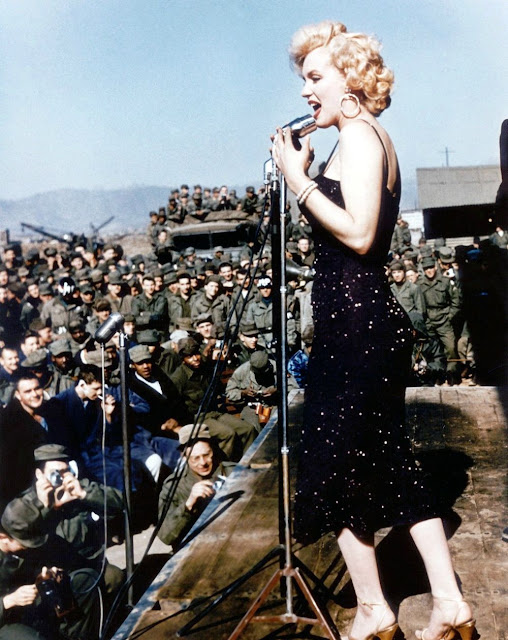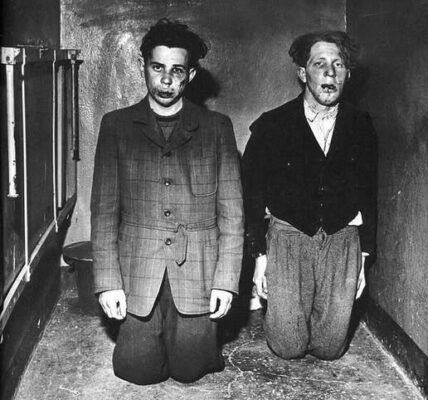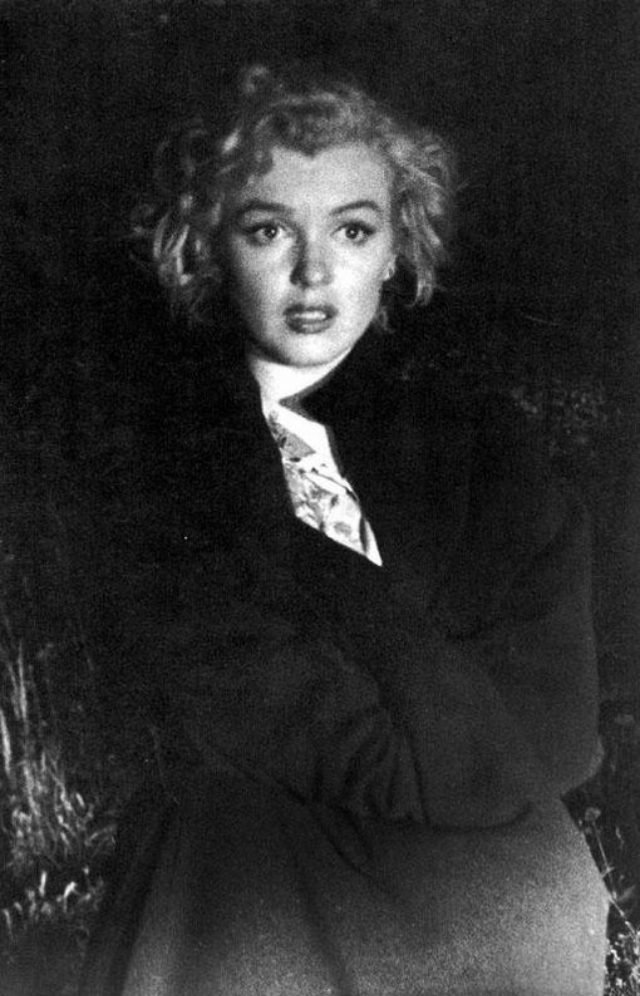The Crutch of Friendship — Dachau, 1945
In April 1945, when the Dachau concentration camp was liberated, the world was greeted with a landscape of horror and desolation. The barbed wire that surrounded the camp no longer held the prisoners, but the traces of their suffering remained etched in every stone, every gaze. Among the survivors who staggered from the barracks were two men, bound by a friendship so profound it defied death itself.
One of them was too weak to walk. His legs, worn down by hunger and disease, could no longer carry him. But his friend, refusing to abandon him to the shadows of Dachau, searched desperately in the courtyard. There, amidst the debris, he found a broken, crude board, marked by time and misery. With trembling hands, he adjusted it, transforming it into an improvised crutch. Then, placing it under his companion’s armpit, he whispered to him:
— You must leave this place standing, like a man, like a brother.
And together, they began their wobbly march. With each step, the exhausted prisoner leaned on the rough wood. But beyond the plank, he found his strength above all in his friend’s firm arm. Their figures, fragile yet heroic, advanced toward the camp gates, under the incredulous gaze of the Allied soldiers and other survivors. In this silent procession, a truth emerged: brotherhood could survive where humanity seemed to have disappeared.
This makeshift crutch was not just a tool for survival. It was a symbol of unwavering fidelity, a loyalty forged in suffering and fear. It represented a resistance stronger than walls, barbed wire, or the screams of executioners. As the two men crossed the gates of Dachau together, they carried a message more powerful than any weapon: love and friendship remain invincible, even in the abyss.
In the concentration camp universe, everything was designed to destroy human bonds. Hunger, humiliation, and arbitrary violence had only one goal: to isolate, dehumanize, and annihilate. Yet, it was precisely in this hell that certain friendships were born and became bulwarks against madness.
Testimonies from survivors of Dachau and Auschwitz confirm this: sharing a piece of bread, a word whispered in the night, a knowing look was sometimes enough to push back death for another day. These simple gestures were invisible forms of resistance. They reminded us that, even in our greatest distress, man retains within himself a spark of humanity that nothing can extinguish.
The story of these two men and their makeshift crutch illustrates this truth. It shows that SEO for collective memory must be fueled by individual narratives, because it is these fragments of humanity that build our overall understanding of history. This type of content has immense emotional value, and, from a modern digital perspective, it also represents a powerful “keyword”: hope , resilience , fraternity .
Today, as we live in a world saturated with information, it’s essential to remember these poignant stories. In a digital society where SEO structures content visibility, these stories must be shared to reach as many people as possible.
Telling the story of Dachau is not just about evoking suffering; it is also about conveying a universal lesson: that of solidarity. The keywords that emerge— memory , humanity , indestructible friendship —are not just search engine optimization levers. They are beacons of meaning to guide our present and our future.
At a time when individualism and social divisions threaten our societies, remembering these two men advancing side by side through the gates of Dachau reminds us that no one can be saved alone. Mutual aid, sharing, and reaching out to others are timeless pillars of survival and human progress.
This seemingly insignificant plank of wood takes on an almost sacred dimension in this story. It not only supported a weakened body, but also carried the soul in an indestructible bond. From a metaphorical perspective, the crutch becomes the image of everything that helps man get back on his feet: compassion, solidarity, memory.
Thus, this scene from 1945 still resonates today like a parable. We all, at different times in our lives, need a “friendship crutch” to keep us going. And we also have a responsibility to be, for others, this fragile but vital support.
In April 1945, two men crossed the gates of Dachau. One found the strength to stand in a broken plank; the other offered his arm and heart so that his friend would survive. This gesture, tiny compared to the immensity of the tragedy, nevertheless illuminates history with an indelible light.
It reminds us that even in the midst of barbarism, man can choose love over hate, loyalty over abandonment. This memory, passed down through the generations, is an essential key to our common humanity. It is this that must guide our steps as we confront the darkness of our own time.
Because beyond the barbed wire, beyond the horrors, one truth remains: as long as there is friendship, there will always be a crutch to help us walk out of the night.







